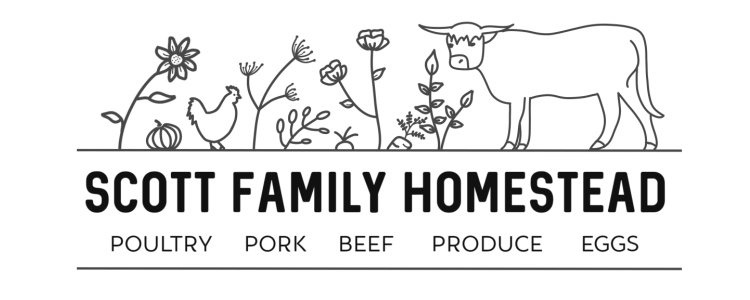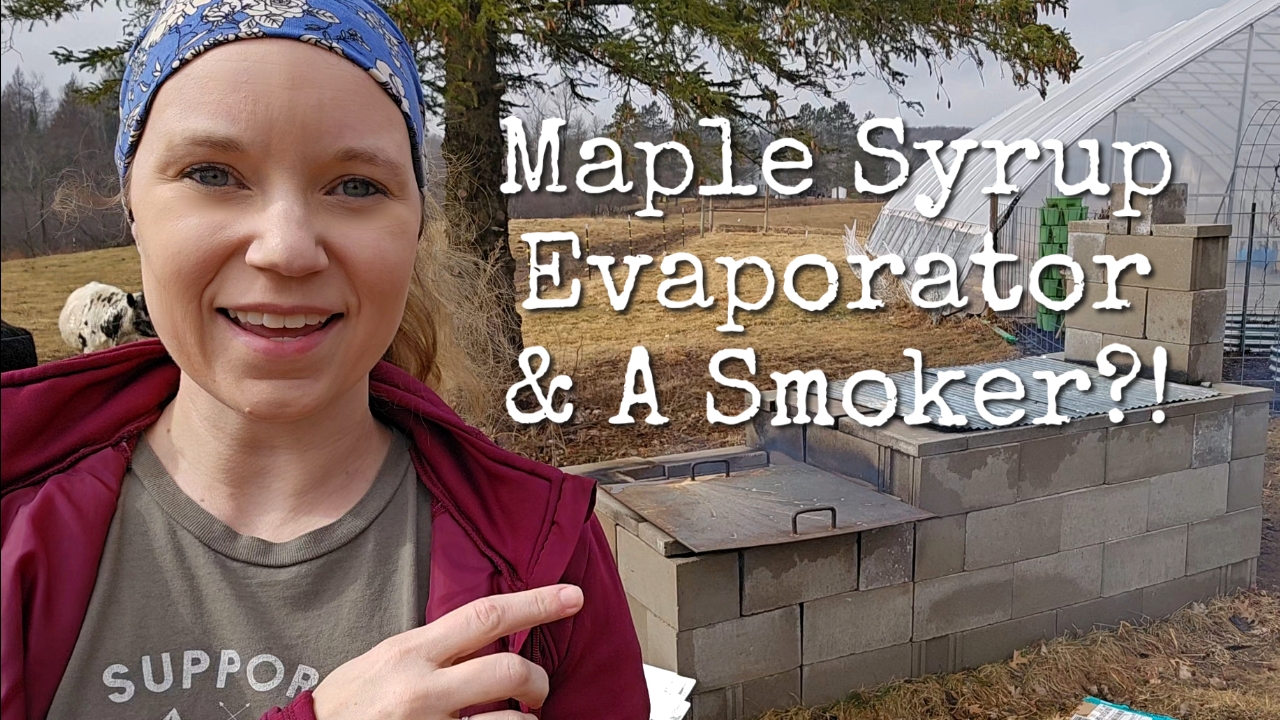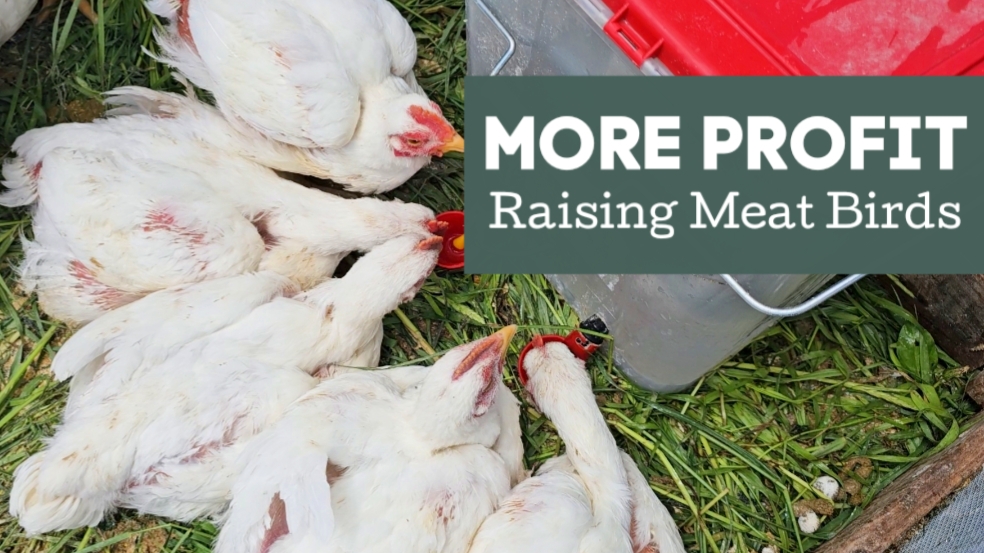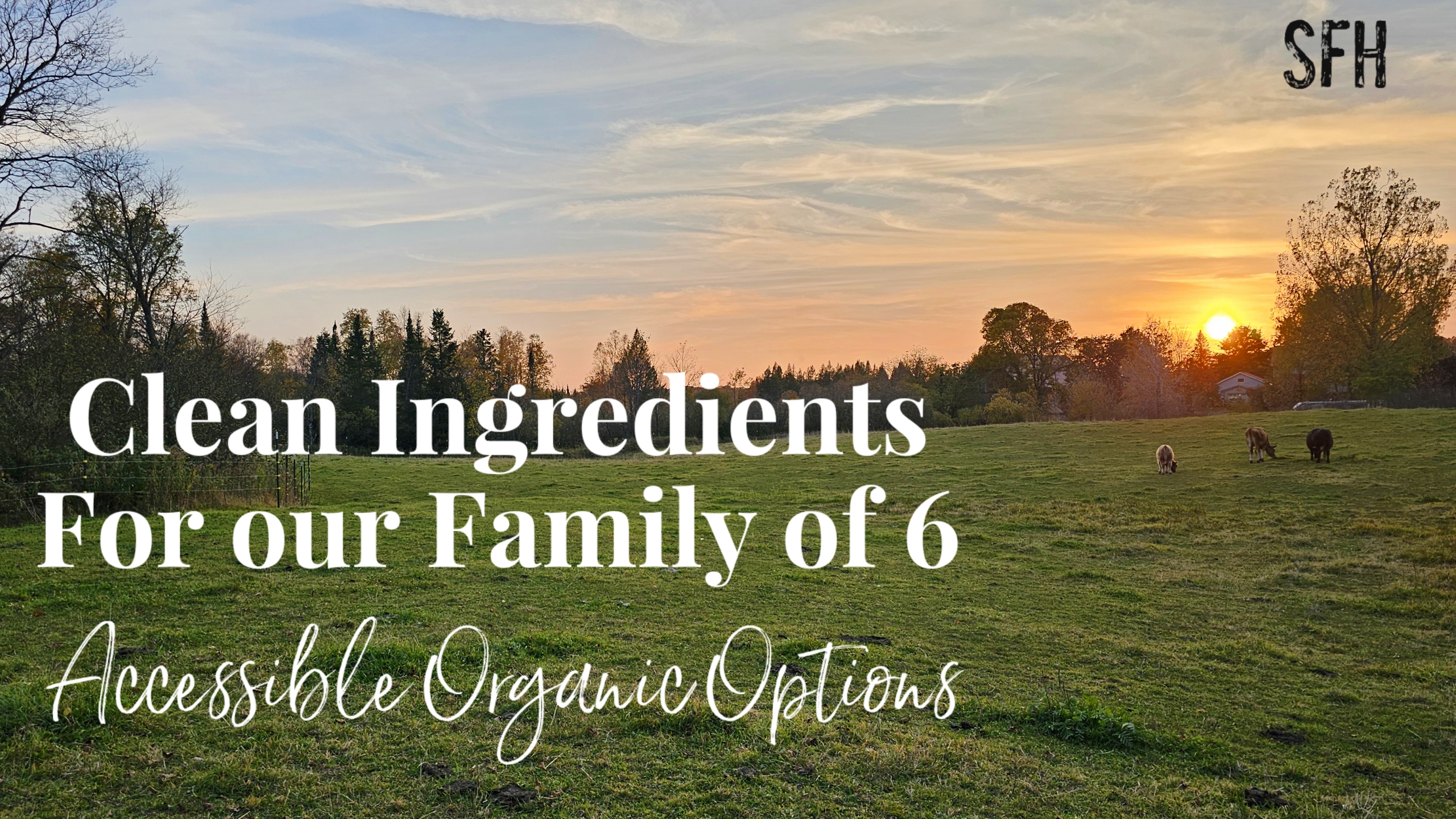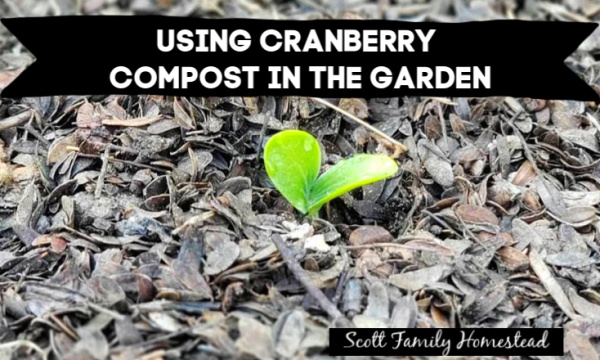
This year we doubled the size of the garden by our house and also added a new garden on our back acreage. This meant we needed to have a load of compost and topsoil delivered to fill our new raised beds and to add to our new garden. After making some calls, it was difficult to find anyone who had topsoil that could be delivered early enough to finish all of the work we had ahead of us before planting time. We finally found a local cranberry bog that has topsoil and cranberry compost. We decided to give it a try.
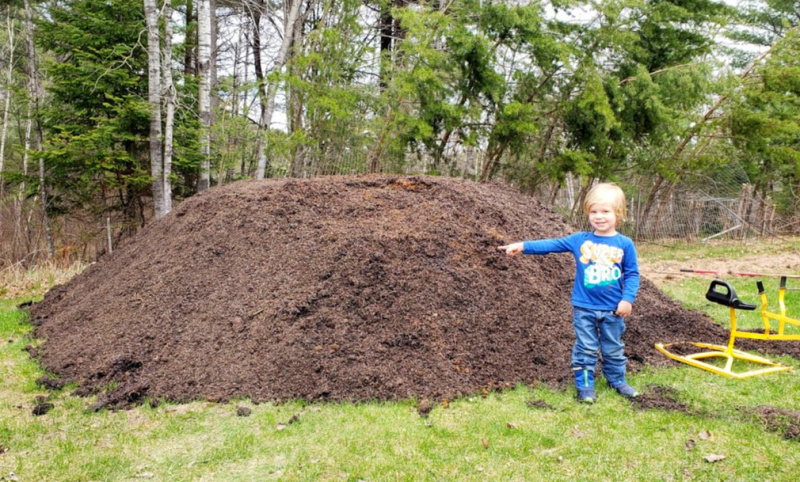
We had 10 yards of 50:50 topsoil and cranberry compost delivered. 10 yards is about double of what we needed, but it never hurts to have some extra compost around for future uses. Last fall we composted our chicken coop bedding and waste to add to our garden. It takes several months to compost chicken waste, because it is too high in nitrogen to use right away. With all fall and winter to compost, it was ready to use by spring time. We emptied out half of the soil in our raised beds and distributed it into the new boxes. Then we added the cranberry compost to all boxes, old and new.
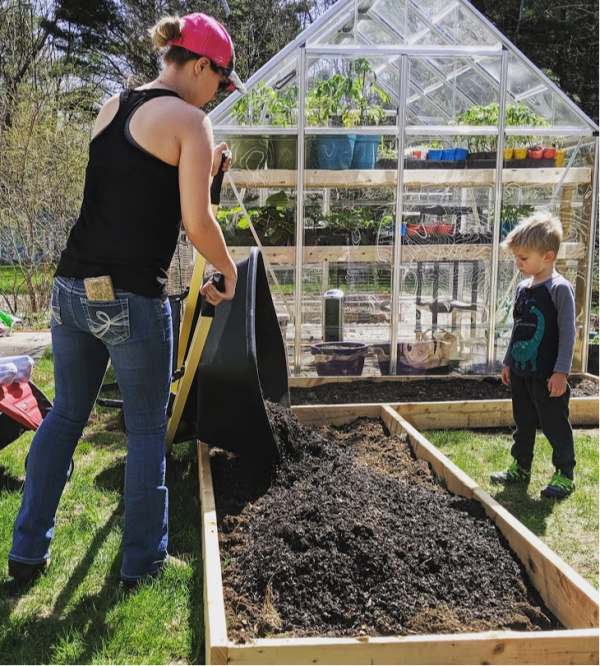
The cranberry compost is mostly cranberry plant matter, leaves and twigs, but also has actual cranberries in it! We were a little bit worried about the acidity, but our at-home soil test came back close to neutral. The compost is almost like a mulch, which is both good and bad.
This soil stays nice and moist under the surface, but very dry on top. I have spent about half as much time watering the garden because the water retention below the surface is amazing. The plants we started indoors thrived right from the start.
Unfortunately, having such a mulch-like surface made direct sowing more difficult. I sowed carrot seeds 3 times and I have maybe a dozen plants to show for it. I tried to keep those areas extra moist on the surface, but they just never took. Even the beans and squash had a hard time sprouting. It took weeks for them to actually pop up. I thought the cucumbers would never come up either, but there they were about a month later.
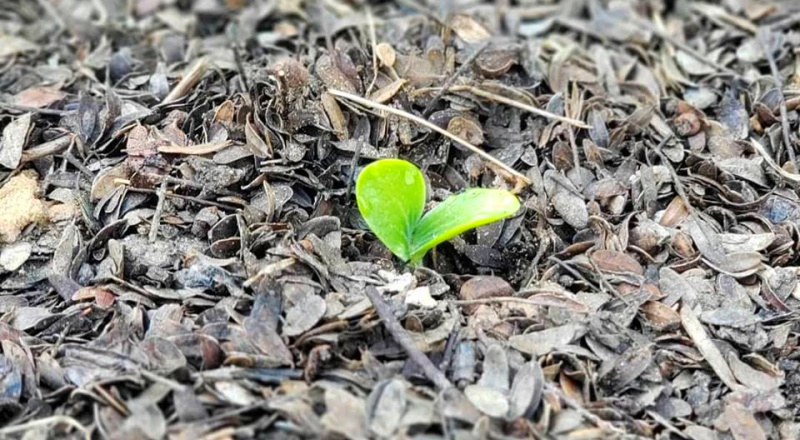
This had a major benefit though. We have hardly had any weeds pop up through this mulch, because they can’t seem to sprout either. I will be very interested to see if this also holds true for coming years, or if this soil just doesn’t have much for weeds. The plants that did establish have done really well and we have had our biggest harvests ever from this year’s garden.
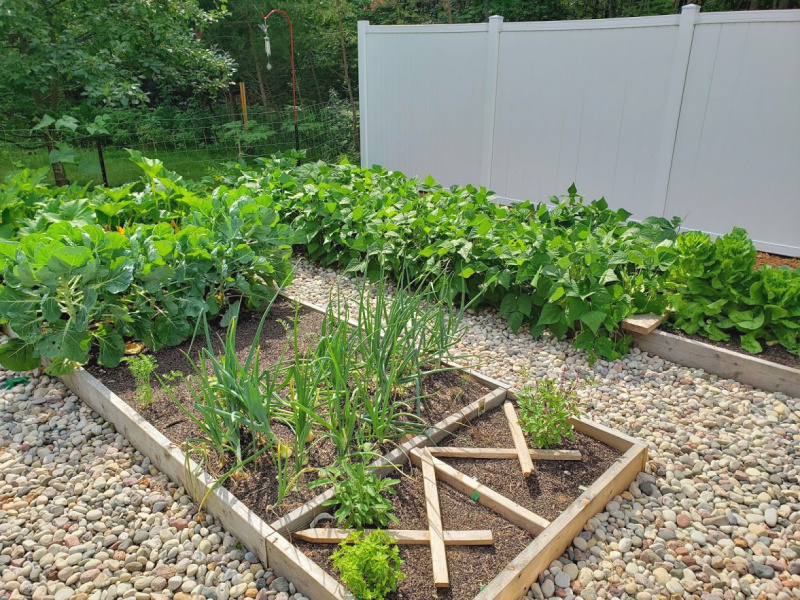
I would, and will, use this topsoil/compost combination in the future. I am going to need to designate a special spots for the tiny surface sown seeds, like carrots and lettuce, though. I may even try to sprout the beans before planting to get a better start on things, although it worked out just fine this year. We have more beans and zucchini than we know what to do with.
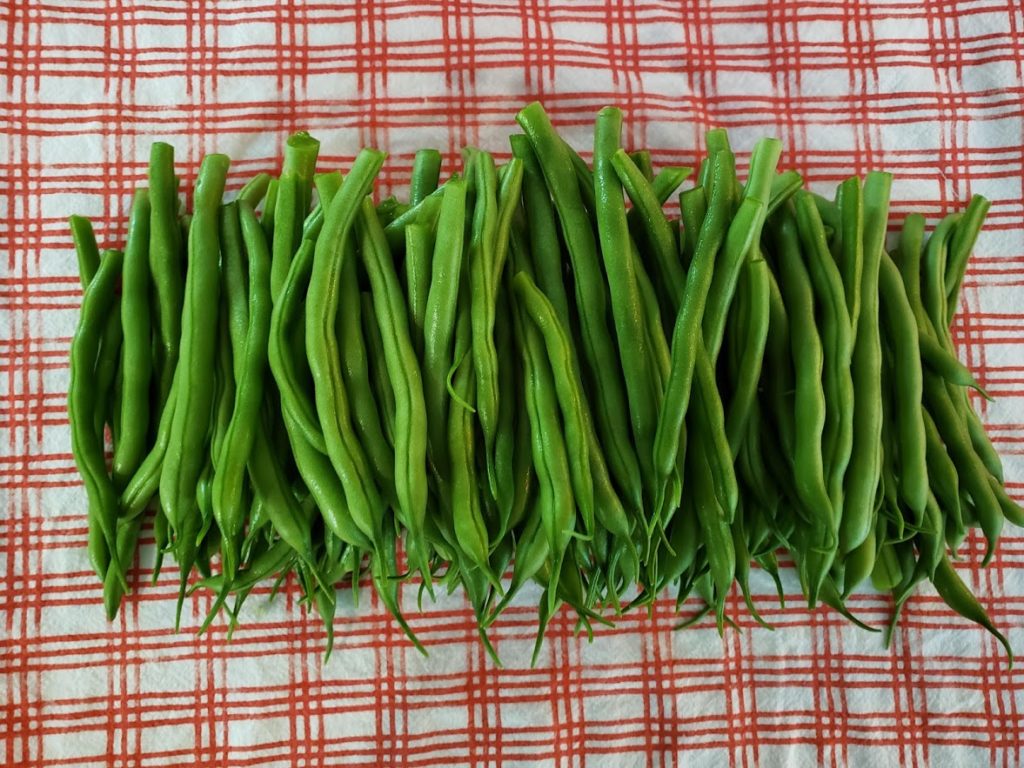
If you are looking for a way to preserve your green beans, take a look at my previous Dilly Bean post. These babies are delicious and you’ll want to set some of your harvest aside to give it a try. Keep an eye out for more garden posts coming up and make sure you are following along on Instagram to stay up to date with the latest happenings on the homestead.
